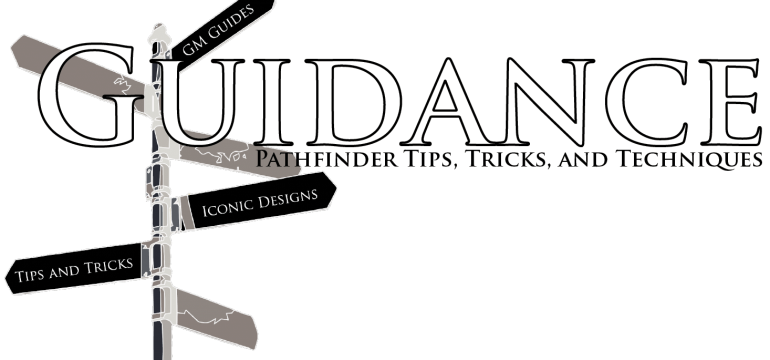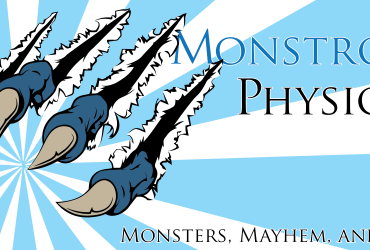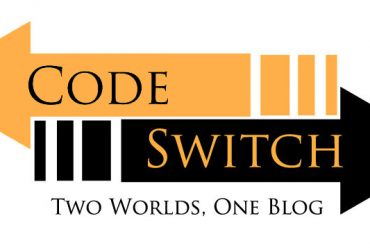Hey everyone! For my last “Boon and Bust” article, I’ve decided to do an analysis on representation in the Starfinder Core Rulebook! As you probably know, Paizo is a company that prides itself on representation and diversity, both in terms of age, body type, ethnicity, gender identity, and sexuality. With this in mind, Perram and I combed through the Starfinder Core Rulebook and made a running tally of all of the depictions of humans within the tome to see just how good Paizo did at diversity in these categories—age, body type, ethnicity, gender identity, and sexuality.
With this in mind, here’s a brief definition for each type of diversity.
- Age: To qualify, the character must clearly be older or younger than “generic young adult.” This means that we (the viewer) need a way of telling that the character is either an adolescent or young, or Middle-Aged or older. If they’d fit as Paizo’s “Adult” age category, they don’t count for age.
- Body Type: To qualify, the character’s body type must portray something that isn’t “toned,” “fit,” and “average of height. Since no good artistic standard exists for this, we relied on the falliability of our own judgment.
- Ethnicity: To qualify, the character must clearly be of a non-fantasy ethnic group that is not Caucasian. We define “non-fantasy” as “having skin tones comparable to those on earth. For example, the red-skinned humans of akiton do not count.
- Gender Identity and Sexuality: To qualify, the character’s actions must somehow indicate that the character is LGBTQ+.
- Race: We are primarily looking at humans for diversity, but with this in mind, we did make some exceptions: androids counted if their bodies lacked clear robotic indications (none qualified); half-elves and half-orcs counted if their ethnicity clearly suggested human ethnicity. For example, a bright green half-orc would not count, but a half-elf who looked Caucasian would count as a Caucasian human. Elves in Pathfinder have no “whites” in their eyes, so we counted any elf-like illustration in the book as a half-elf if we could see the whites in their eyes.
- Other Points: If a clear representation of a human was in this book and circumstances made it impossible to discern if they met any of the above criteria, they failed that criteria. (If they didn’t look diverse for a category, they counted as non-diverse.) Also, if a picture included multiple counts of a thing, it only counted once. (For example, if a picture had five white guys in it, it only counted once.) Following this logic, multiple counts of the same character only count once. This mostly applies to the Iconic Envoy.
With this in mind, let’s dive in!
Human Counts
- Iconic: Navasi is an Asian female. (1 pt)
- Themes: Ace pilot is white female. (1 pt)
- Themes: Spacefarer is white female. (1 pt)
- Themes: Themeless is black female. (1 pt)
- Human Race: One of the sample humans is a Native American male. (1 pt.)
- Human Race: One of the sample humans is a Black female. (1 pt.)
- Mechanic: One of the sample characters is a white male. (1 pt.)
- Mystic: One of the sample characters is a white male. (1 pt.)
- Operative: One of the sample characters is a white male. (1 pt.)
- Operative: One of the sample characters is a black female. (1 pt.)
- Solarian: One of the sample characters is a white male. (1 pt.)
- Soldier: One of the sample characters is a plus-sized white female (1 pt.)
- Archetypes: The Starfinder is a black male. (1 pt.)
- Skills: Raia is fighting at least 3 middle-aged white males. (2 pts.)
- Feats: White female on page 161. (1 pt.)
- Starships: 3 or 4 white males on page 293. (2 pts.)
- Spells: Black woman casting life bubble on page 363. (1 pt.)
- Environment: White female dying on page 395. (1 pt.)
- Pact Worlds: White female on page 425. (There might be an Asian female on this page too, but everything about her except her hair is blocked by a dwarf.) (1 pt.)
- Pact Worlds: White male talking to aliens on Page 427. (1 pt.)
- Pact Worlds: White female on page 469. (1 pt.)
- Pact Worlds: Hispanic (?) female on page 478. (1 pt.)
- Pact Worlds: Asian male on page 479. (1 pt.)
- Pact Worlds: White male on page 496. (1 pt.)
- Pact Worlds: Seelah in Space (black female) on page 509. (1 pt.)
All data has been secured! Let’s check it out!
The Breakdown
We’ll be looking at each of the categories herein and going from there. For the purpose of this study, the sample size of artwork is 21 pieces. A piece of artwork is worth 1 point to a category (diverse or nondiverse) if it has at least one character fitting the category’s description. If the piece has two or more characters, it is worth 2 points instead.
Age
- Adolescent and Younger Count: 0 pieces
- Total Points: 0
- Middle Aged and Older Count: 1 piece (#9)
- Total Points: 2
- Adult Count: 20 Pieces (All except #9)
- Total Points: 25
Body Type
- Average Count: 20 pieces (All except #11)
- Total Points: 26
- Plus-Sized Count: 1 piece (#11)
- Total Points: 1
- Thin: 0 pieces (None)
- Total Points: 0
- Other: 0 pieces (None)
- Total Points: 0
Ethnicity
- Minority Count: 10 pieces
- Total Points: 10
- White Count: 15 pieces (#1, #2, #6, #7, #8, #10, #11, #13, #14, #15, #17, #18, #19, #20, #23)
- Total Points: 17
Sex
- Female Count: 13
- Total Points: 13
- Male Count: 12
- Total Points: 14
Gender Identity & Sexuality
- Straight Count: 0 pieces
- Total Points: 0
- Queer Count: 0 pieces
- Total Points: 0
- Cis Count: 0 pieces
- Total Points: 0
- Trans Count: 0 pieces
- Total Points: 0
Assessments
Alright, so with this data we can surmise a few things about diversity in this book, which I’m going to list out below:
- Age & Body Type: Representation for young people, old people, and people without a “fit and trim” body type is basically nonexistent in the Starfinder Core Rulebook, with the only piece going to a plus-sized female. I’m glad this piece exists, but it shouldn’t be asked to carry the entire diversity of the human form (which is even specifically talked about in the human section of Chapter 2). Additionally, there is NO appearance of old or young people except for one piece with a bunch of coded antagonists attacking the iconic technomancer. Paizo doesn’t have a great history with their representation of old or young people in their world, so it was a shame to see this omitted.
- Ethnicity: Okay, so I both want to applaud Paizo and mention that there’s still room to do better. There’s a near 50:50 split between white characters and non-white characters in the SFCRB, which is AMAZINGLY good. Hats-off to Paizo, I’m not even sure if any other publisher has ever come close to that ration. (Perram says that statistically, the precise ratio is 4:6, but we’re both willing to round in Paizo’s favor.) However, it’s worth noting that this ratio lumps ALL non-white characters into one group, which means that white is still the majority character ethnicity in this book. Hence why my final verdict is: awesome diversity, you deserve applause, but there are still more mountains to climb.
- Sex: So Paizo actually manages to depict more human women then men in the Starfinder Core Rulebook, but the men manage to slink ahead because every time there’s a group of humans in this book, they’re all men. So again, good job on this front but you might want to ask your artists to diversify gatherings a bit more. (It would have been especially nice to have a woman or two in the “building starships” illustration.)
- Gender Identity and Sexuality: So there’s no pictures in this book that hint at characters’ gender identity and sexuality, which I guess is a good thing in the sense that this book isn’t favoring any one over the other, but it’s also not a great thing since without those call-outs, people are going to reset to default, so to speak, which is straight cisgendered. I would have appredicated if one of the fancy full-page spreads (or maybe one of the 1/2 page illustrations) was Navasi looking longingly at her lover right before she died, as discussed in her backstory. That would have been a great way to visually reinforce the diversity of the world they were writing. However, as a single point in Paizo’s favor, Arshea, who is basically Pathfinder’s LGBT+ god, has their own write-up in the book. That is a HUGE nod to the LGBT+ community, so I’m going to keep my assentation’s at: you done good.
Final Thoughts
Overall, the Starfinder Core Rulebook is likely the most diverse roleplaying book of all time. Does it have perfect representation? Absolutely not. For one, the human section talks about how physically diverse humanity is, but never really delivers in terms of body shape. Furthermore, characters who aren’t in their 20s or 30s are basically ignored artistically, there’s still a larger ratio of white characters then any other ethnic group. Also, both “multi-human” picture in this book are predominantly male (Perram and I even joked about the men in illustration #14 all being literal clones of each other), and this book tries to take a “our setting is universally diverse” stance when, frankly, the real world isn’t there yet. I strongly feel that this book really could have used a diversity disclaimer along the same lines as Dungeons and Dragons’ 5th Edition, and it really could have used a removal of the minimum age rules (which 5E also did, if I remember correctly). Basically, we need a game system that tells us that it’s okay to play who we are if we want to, that everyone can be a here, and Pazio is SO close with the Starfinder Rulebook. I sincerely hope Paizo continues to push the boundaries of their diverse, inclusive world.
And if anyone questions whether or not this world is inclusive, well, now you have the stats to prove it!






